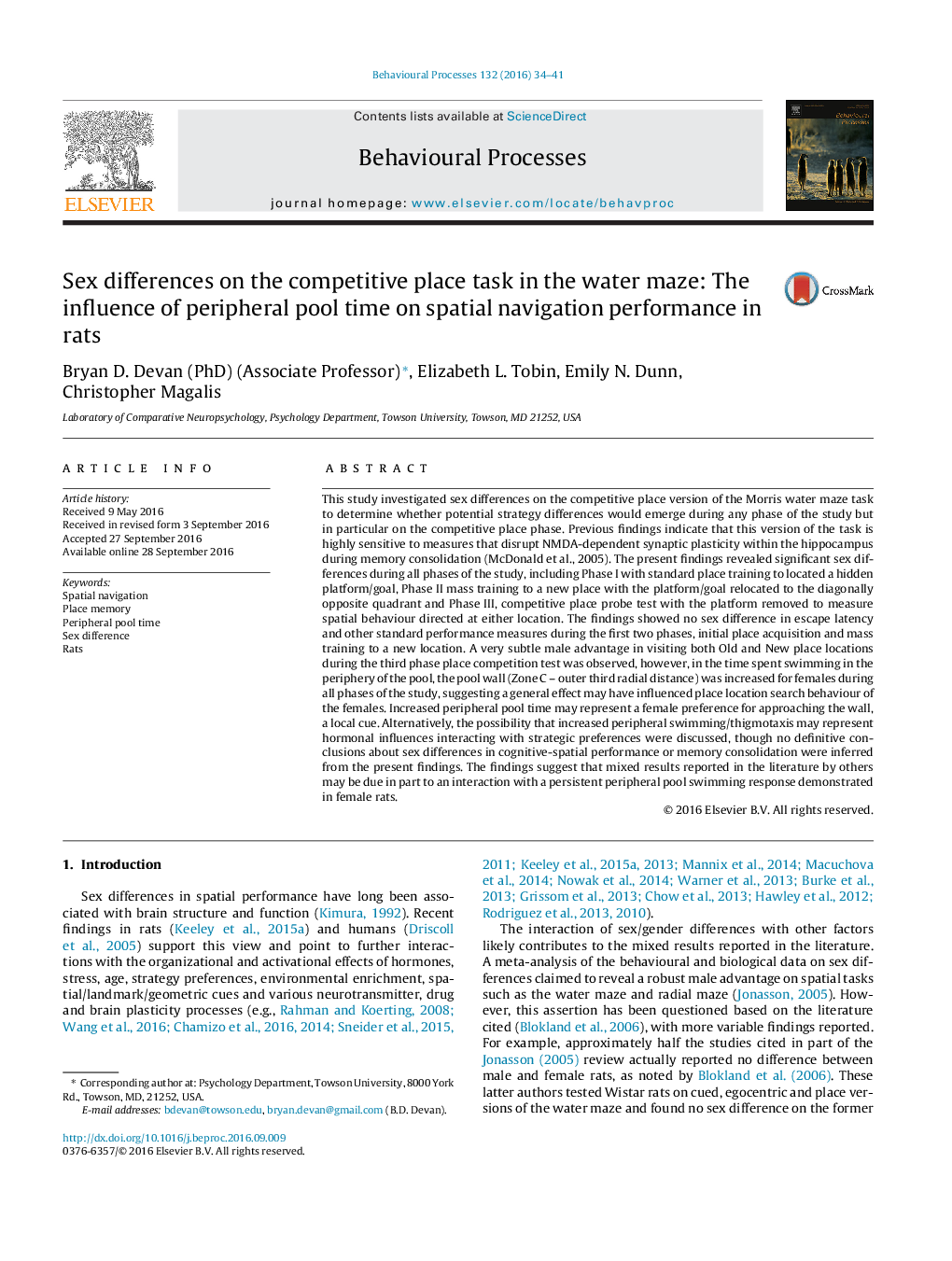| Article ID | Journal | Published Year | Pages | File Type |
|---|---|---|---|---|
| 8497045 | Behavioural Processes | 2016 | 8 Pages |
Abstract
This study investigated sex differences on the competitive place version of the Morris water maze task to determine whether potential strategy differences would emerge during any phase of the study but in particular on the competitive place phase. Previous findings indicate that this version of the task is highly sensitive to measures that disrupt NMDA-dependent synaptic plasticity within the hippocampus during memory consolidation (McDonald et al., 2005). The present findings revealed significant sex differences during all phases of the study, including Phase I with standard place training to located a hidden platform/goal, Phase II mass training to a new place with the platform/goal relocated to the diagonally opposite quadrant and Phase III, competitive place probe test with the platform removed to measure spatial behaviour directed at either location. The findings showed no sex difference in escape latency and other standard performance measures during the first two phases, initial place acquisition and mass training to a new location. A very subtle male advantage in visiting both Old and New place locations during the third phase place competition test was observed, however, in the time spent swimming in the periphery of the pool, the pool wall (Zone C - outer third radial distance) was increased for females during all phases of the study, suggesting a general effect may have influenced place location search behaviour of the females. Increased peripheral pool time may represent a female preference for approaching the wall, a local cue. Alternatively, the possibility that increased peripheral swimming/thigmotaxis may represent hormonal influences interacting with strategic preferences were discussed, though no definitive conclusions about sex differences in cognitive-spatial performance or memory consolidation were inferred from the present findings. The findings suggest that mixed results reported in the literature by others may be due in part to an interaction with a persistent peripheral pool swimming response demonstrated in female rats.
Related Topics
Life Sciences
Agricultural and Biological Sciences
Animal Science and Zoology
Authors
Bryan D. (Associate Professor), Elizabeth L. Tobin, Emily N. Dunn, Christopher Magalis,
